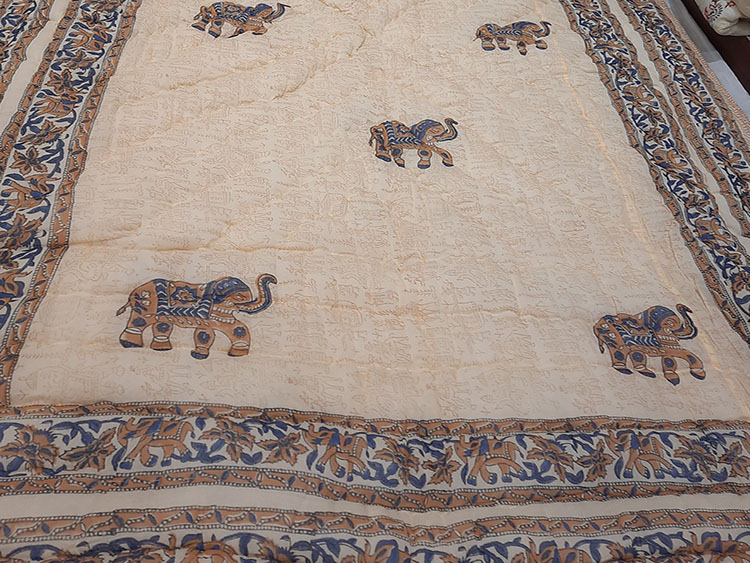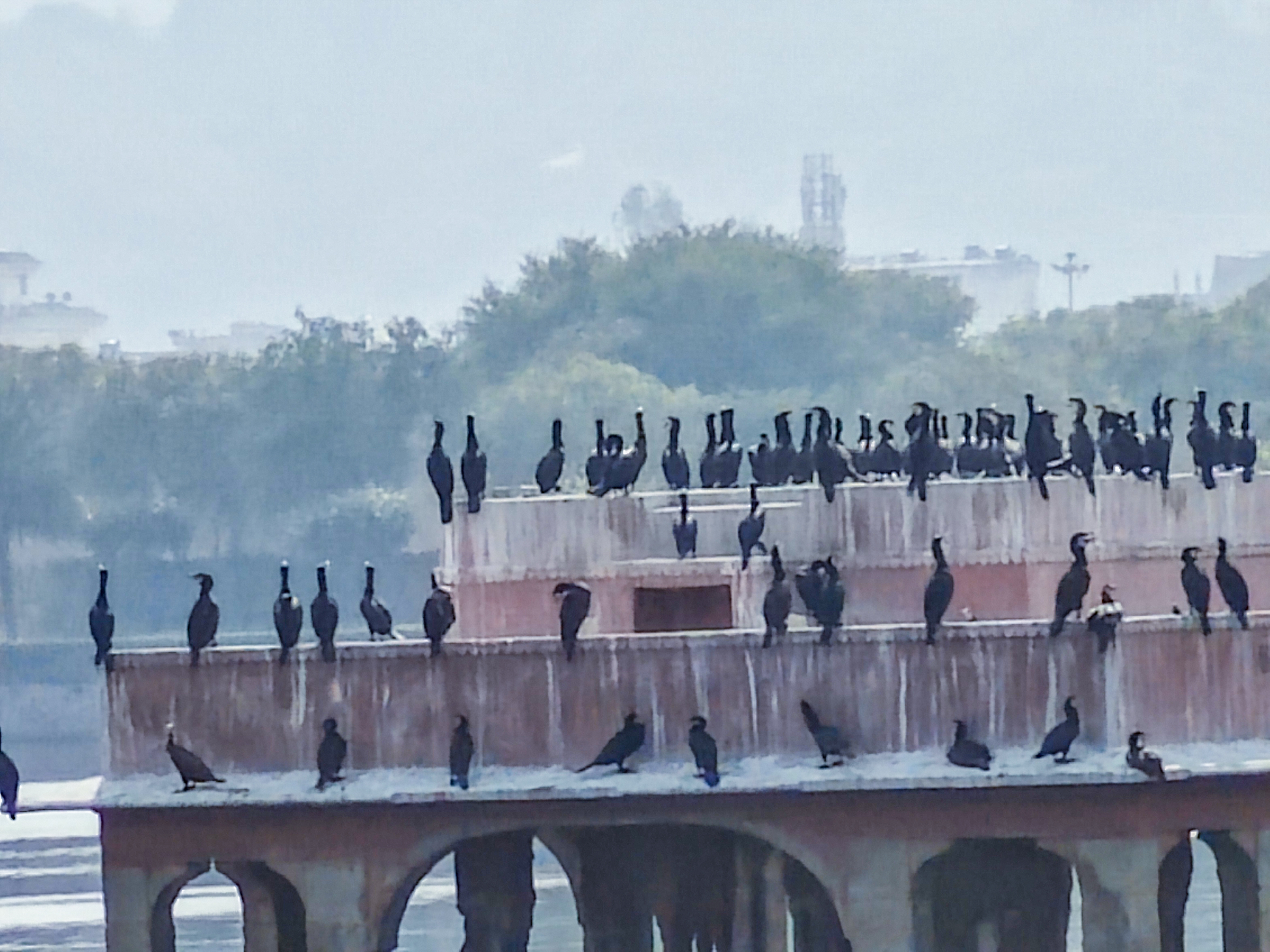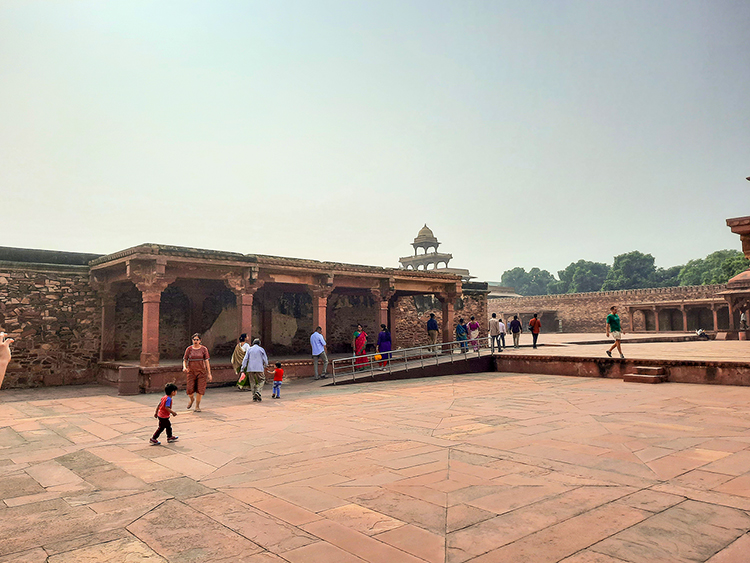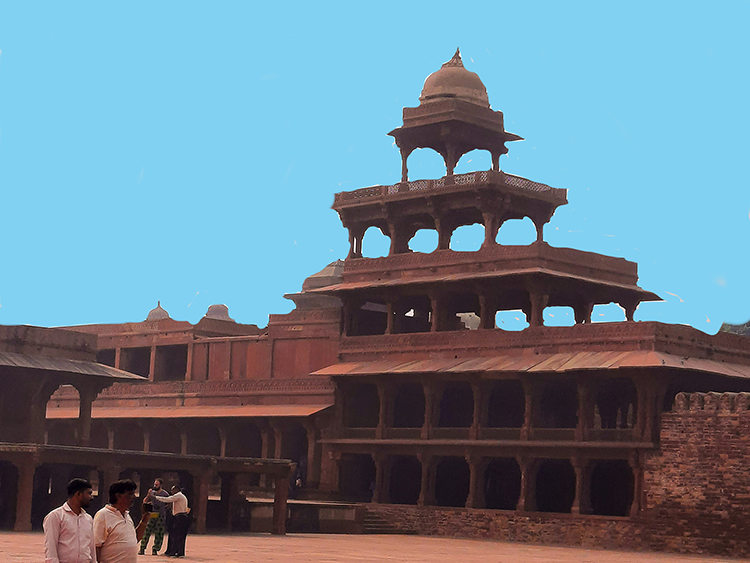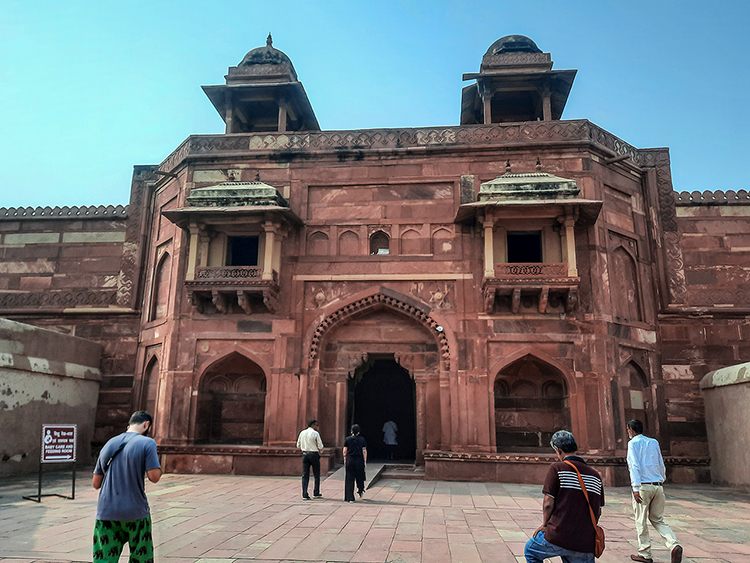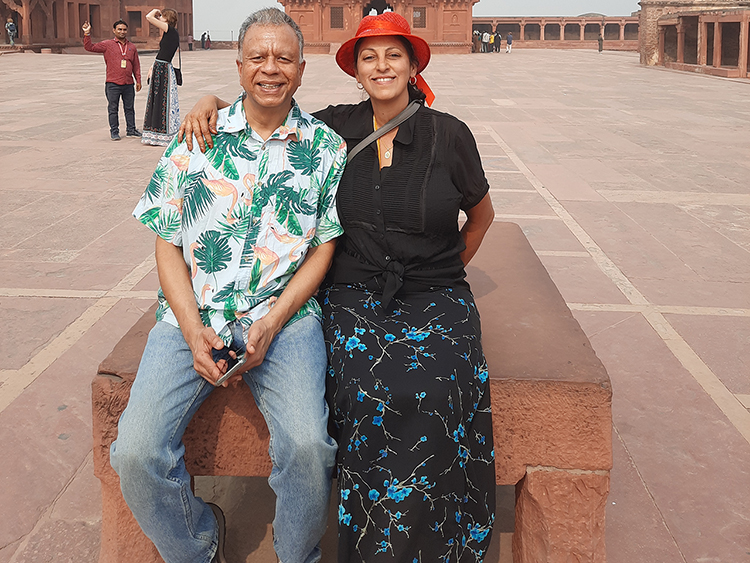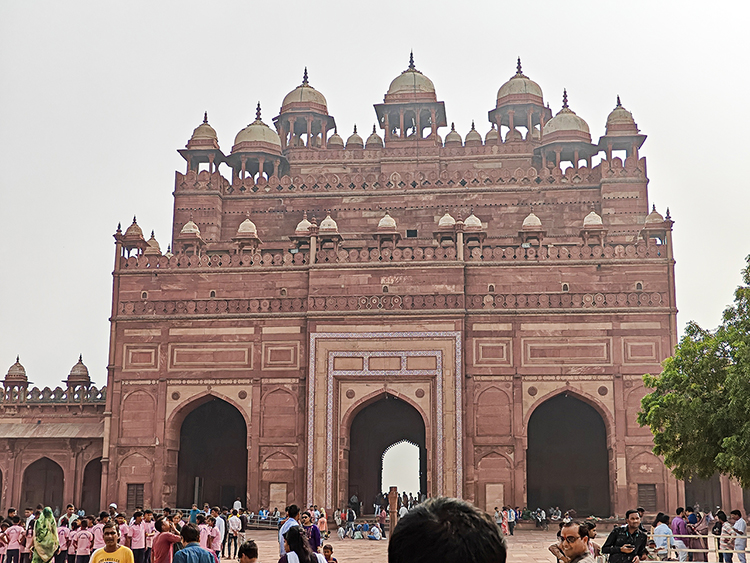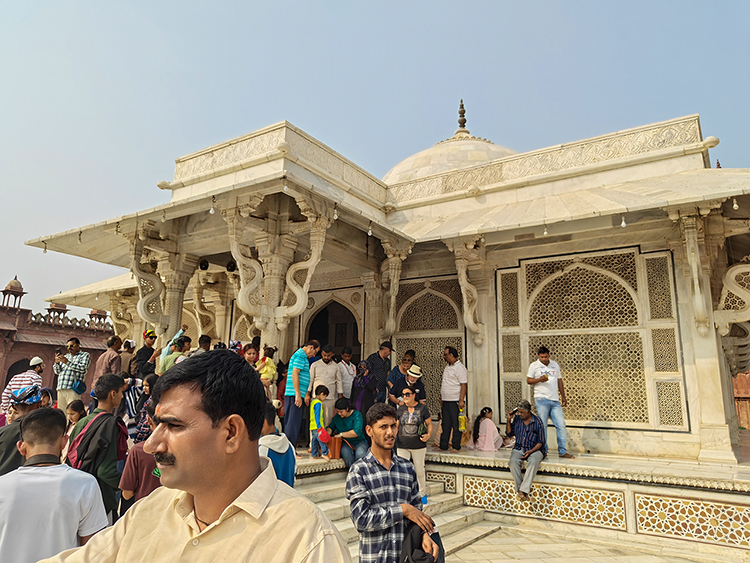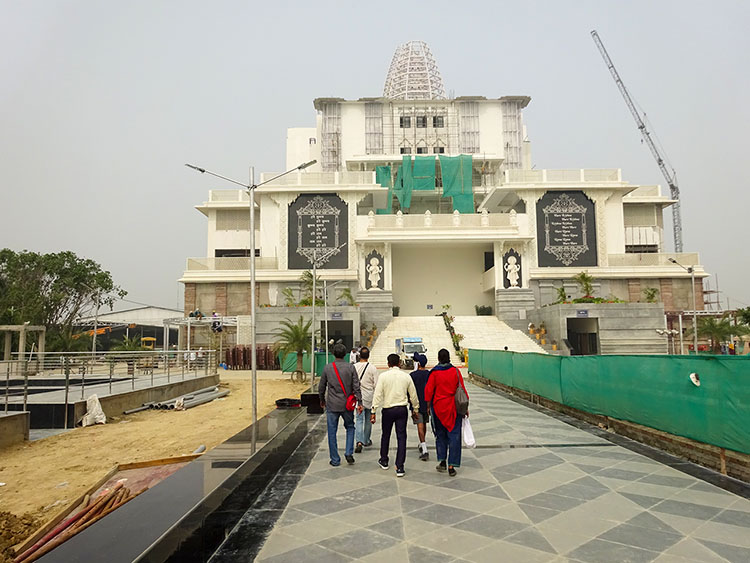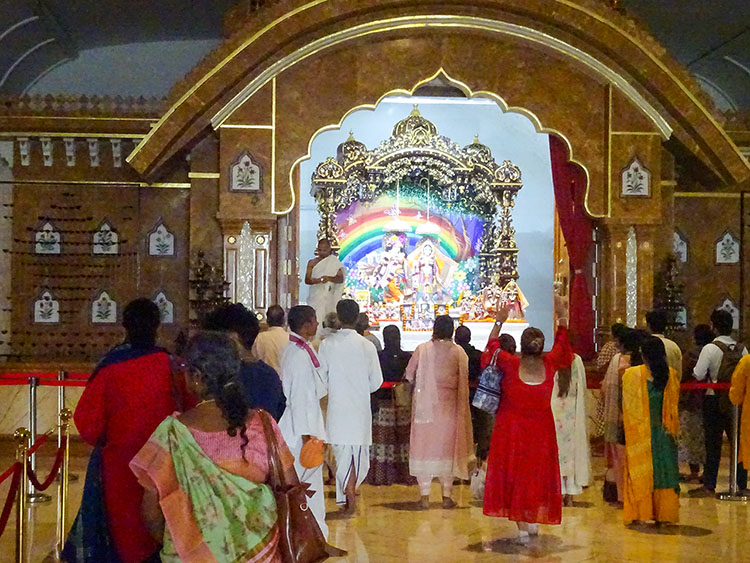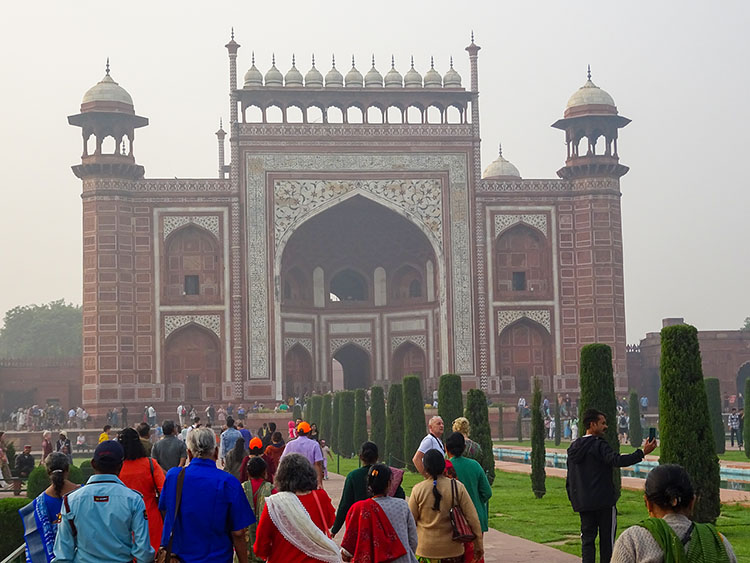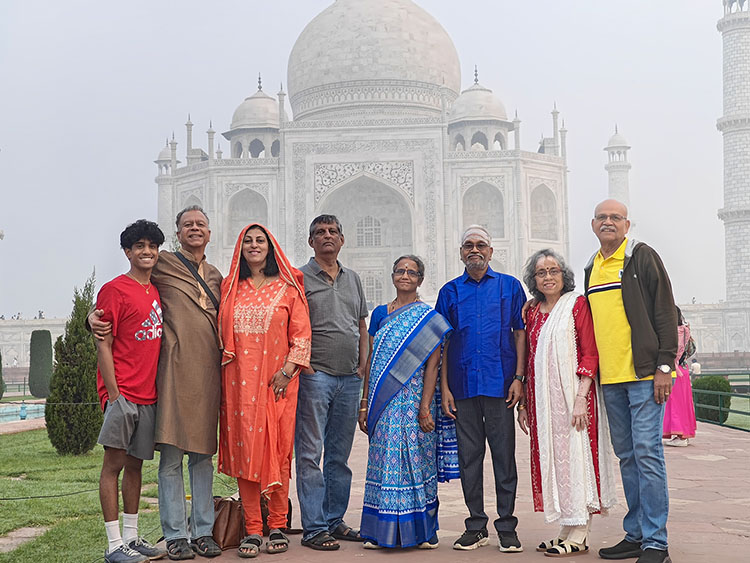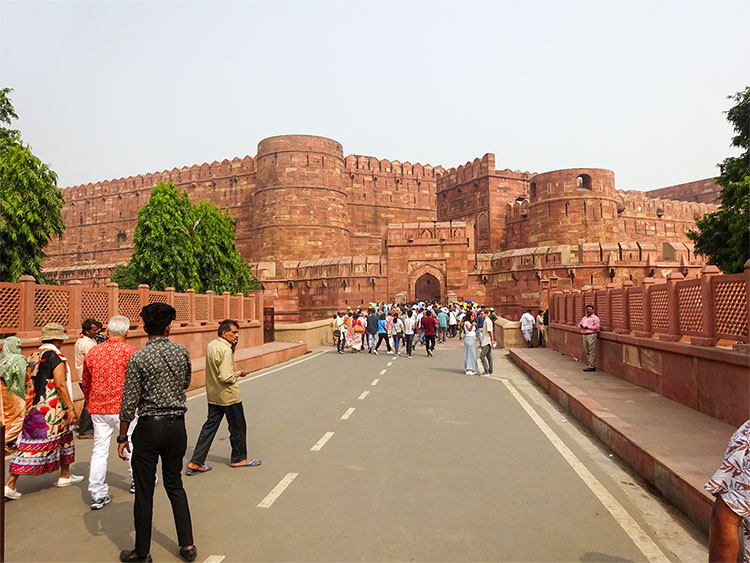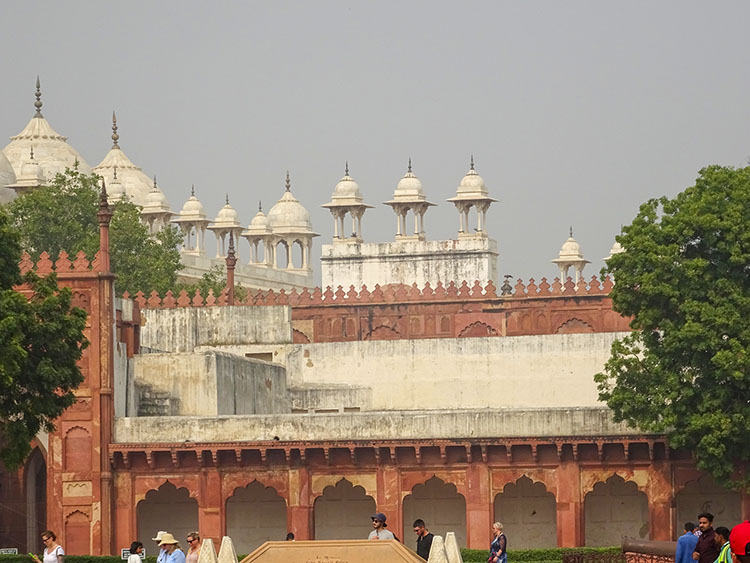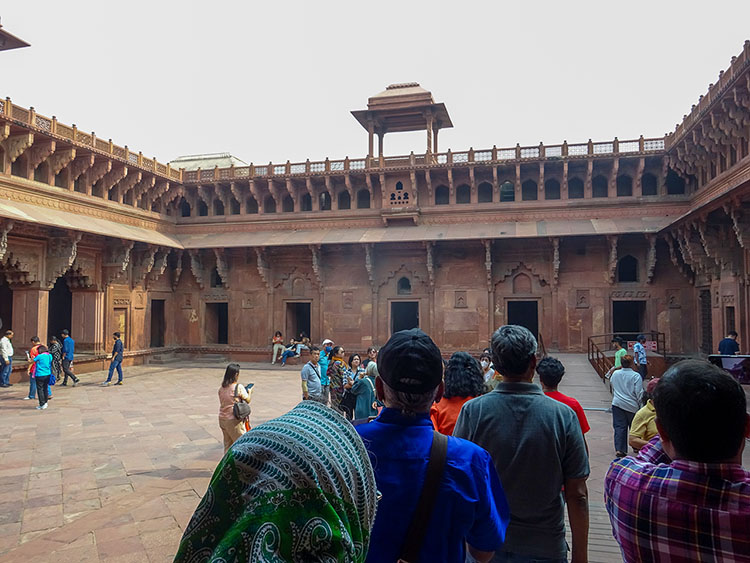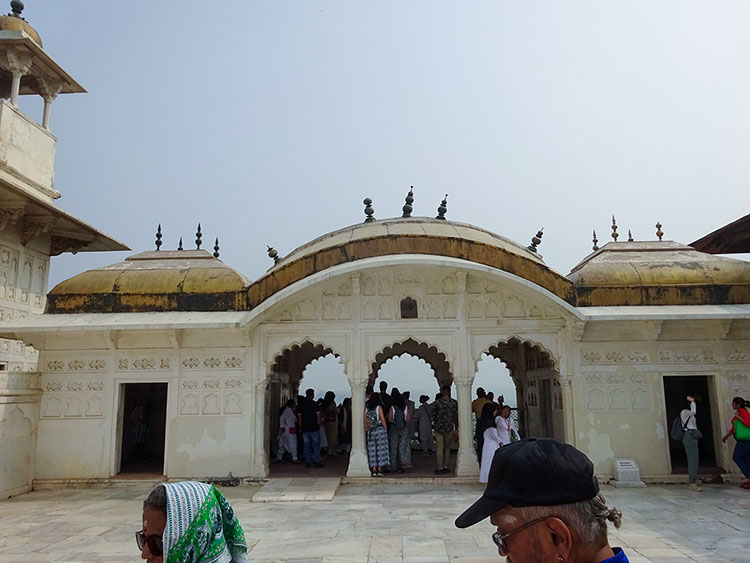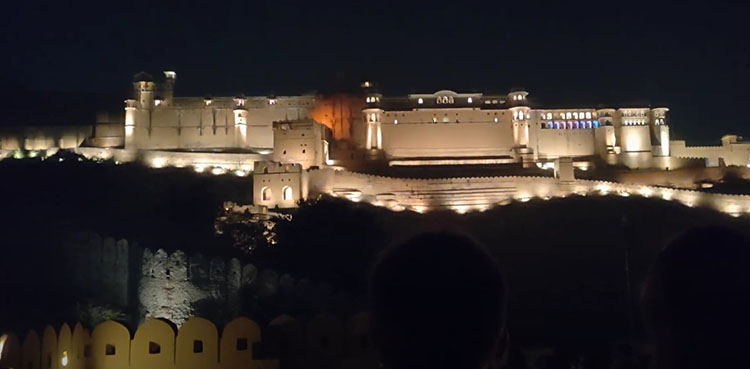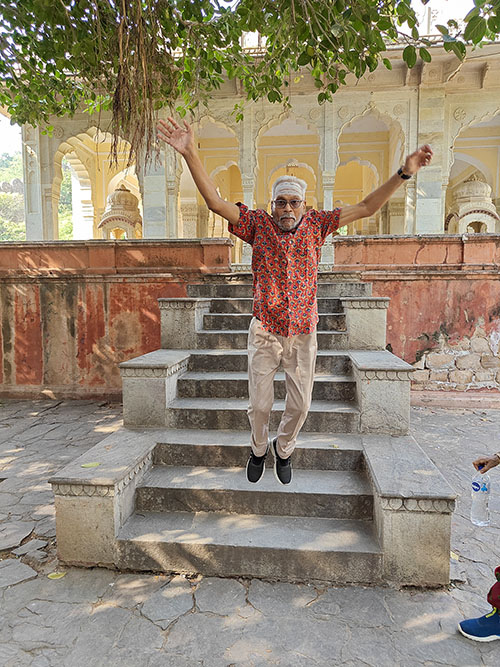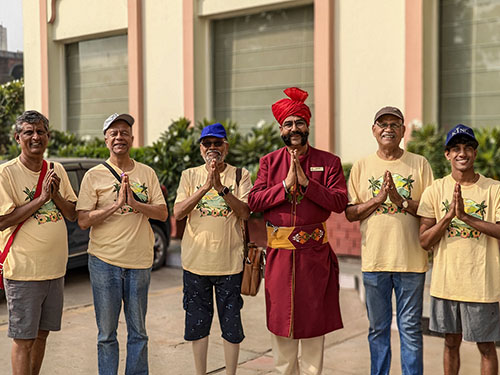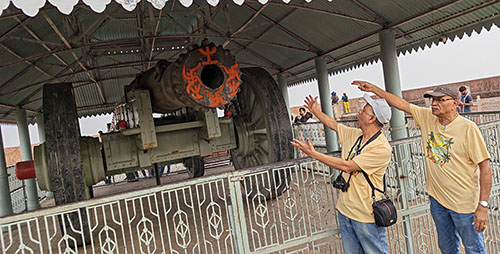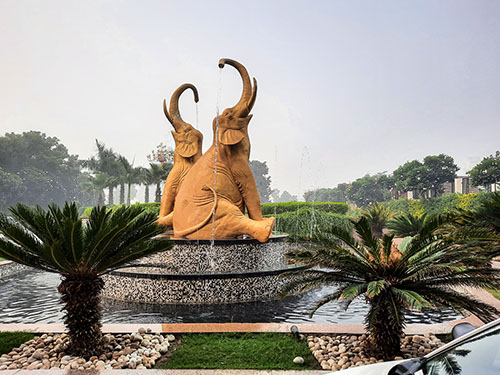On day four, we first visited NaharGhar Fort, Sheesh Mahal and Wax Museum which are all in one place.
NaharGhar Fort : Located in Amravalli hill range, this fort was built in 1734 by the then Maharaja Jai Singh as a resting place for him and his queens. This was also used for hunting by the royal family. From the fort you get a view of the city below. This fort was originally built to protect the empire from invaders.
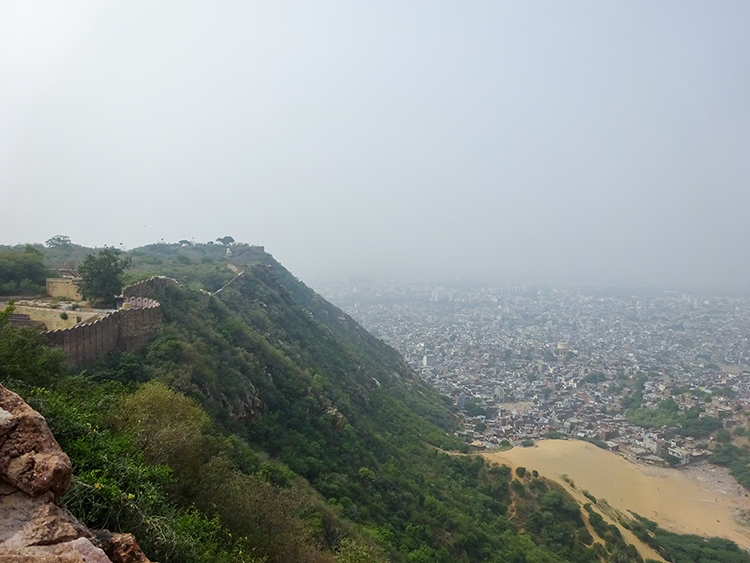
View from the Fort
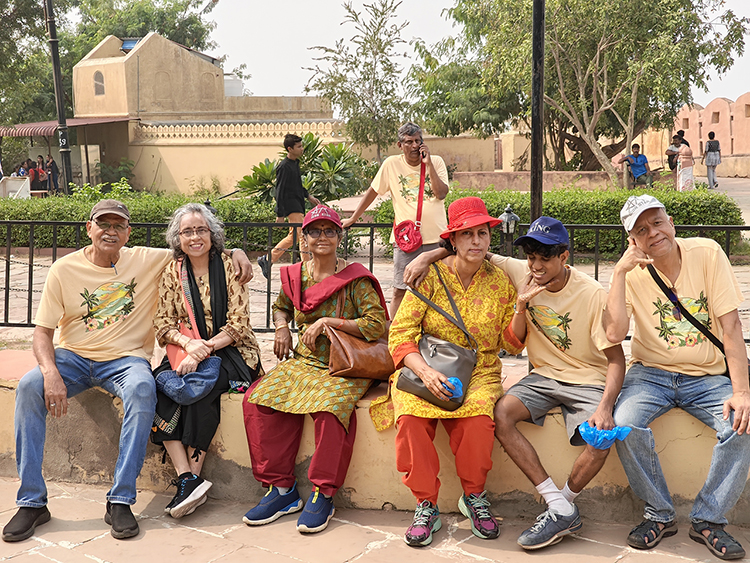
Inside the Fort
Inside the fort, there are three attractions viz., Wax Museum, Royal Dabar and Sheesh mahal. All three attractions are worth watching
Wax Museum :
At the entrance is a 3 seater motor cycle for taking photographs. There are 32 effigies of prominent personalities like Albert Einstein, Jawaharlal Nehru, Ravindranath Tagore, Gandhiji, Subashchandra Bose, Bhagatsingh, Cricketers like Sachin Tendulkar, M S Dhoni, Former President Dr.Abdul Kallam, Film personalities like Amitabh Bachchan, Rajnikanth, Akshay Kumar, Jackie Chan, Sportsperson like Saina Nehwal and Lionel Messi, other personalities like Swami Vivekanand, Mother Teressa, Tenzin Gyatso, Michael Jackson,, Iron Man, Spider Man, Doremon, Astonaut Kalpana Chawla etc. Photography inside the museum, darbar and sheesh mahal by pubic is not allowed but you can hire professional to take photographs.
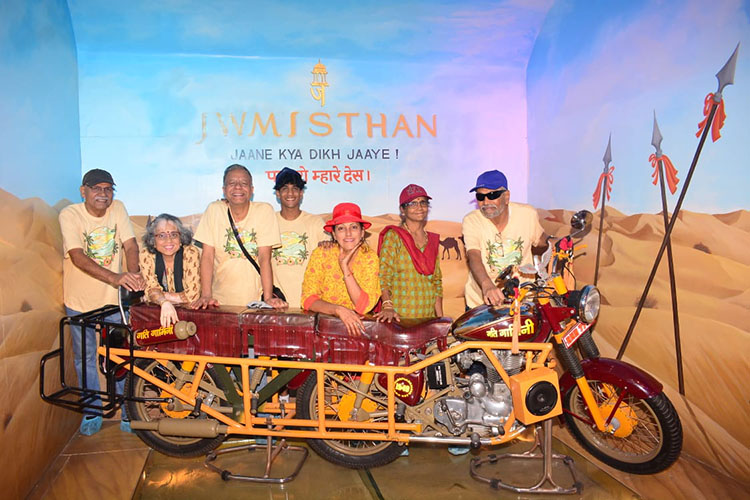
3 seater Motor Cycle
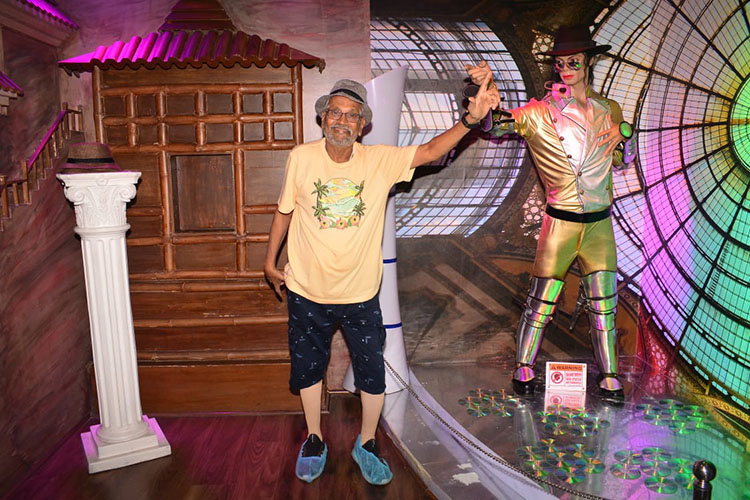
Michael Jackson
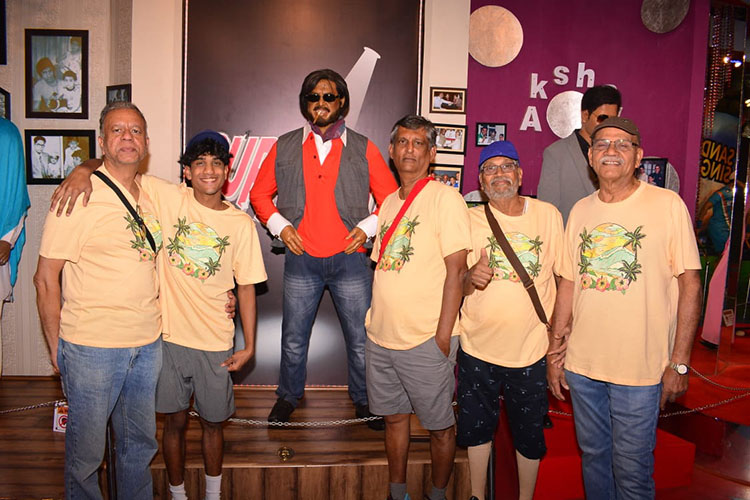
Actor Rajanikanth
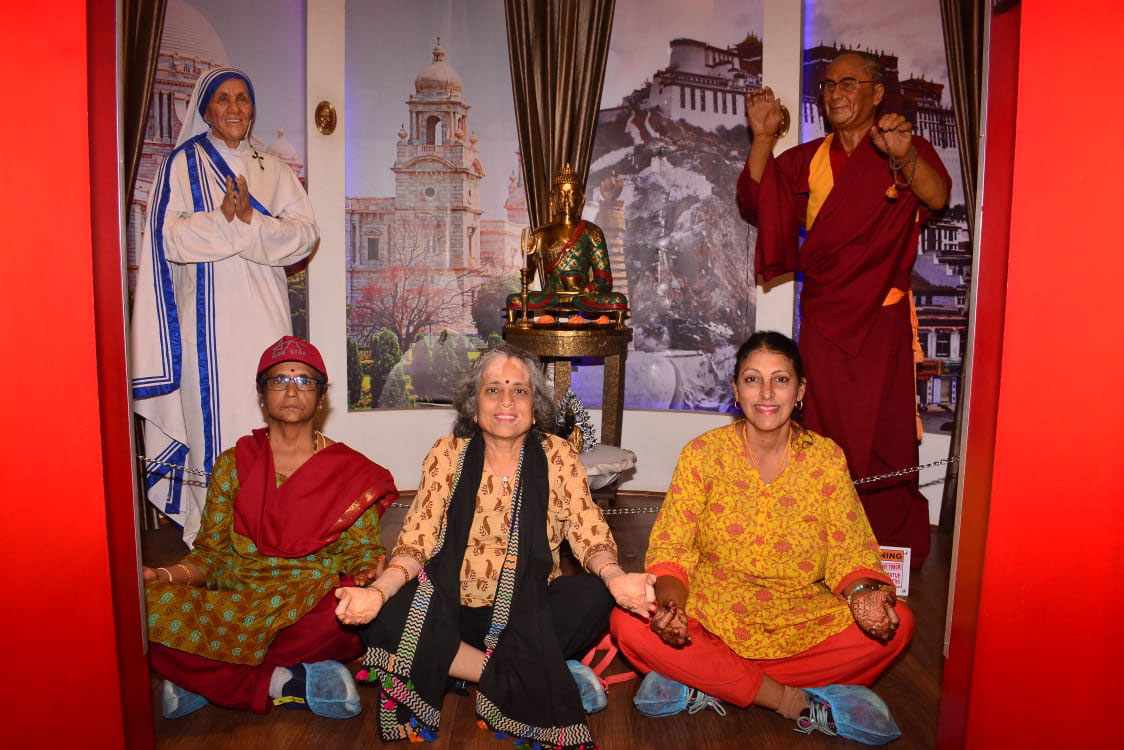
Mother Theresa and Tenzin Gyatso
Royal Darbar :
This depicts the charming royal courtroom from the 18th century. Aptly named The Royal Darbar, right from the entrance till the end, it is decorated with the enchanted paintings that depict the rich heritage of Maharajas Sawai Singh II, Sawai Ram Singh II, Sawai Modho singh II, portrait of Maharna Pratap and Maharani Gayatri Devi. There is also the Kohinoor Diamond on display here.
Sheesh Mahal :
Sheesh Mahal is full of awe inspiring mirror work, a craft centuries old. Consisting of more than 25 lac glass pieces, the illusions created here are very inspiring. The mahal is of glass floor, ceiling and side walls. All these pieces were hand stitched. The flowers and paintings are made from gold colors. The glasses are of different shapes and colors like white, green, red and blue glasses. On the floor is a circular design consisting of different colors of glasses. It was an awesome experience to walk on a glass flooring. The throne here is sun shaped with white structure on top coupled with white, yellow and orange glass pieces placed together. Precious stones and gold leaves were used in designing the walls, ceiling and rooms.
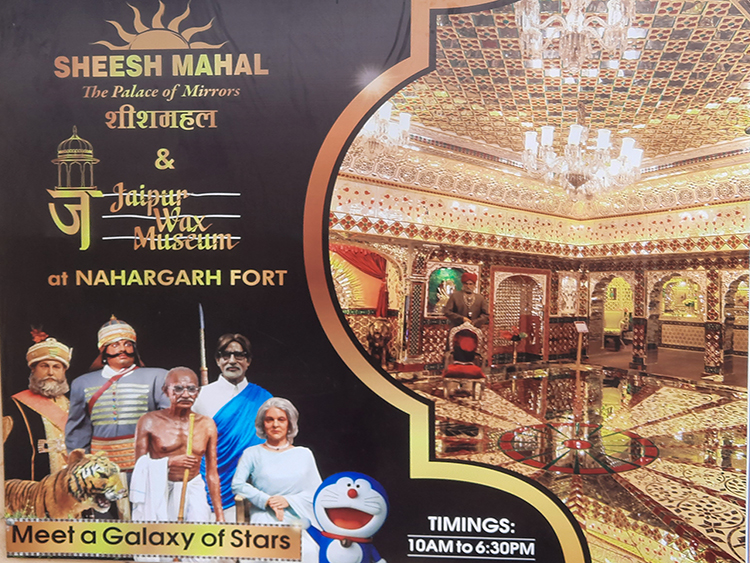
Banner - Sheesh Mahal on the right
We then moved on to Jaighar Fort.
This fort was built by Sawai Jai Singh II in 1726 to protect the Amer Fort and its palace complex and was named after him. This fort was the center point of artillery production for the kings. It houses the world’s largest cannon viz., Jalvan Cannon. The fort provides a stunning view of Jaipur city and also the long wall that was created around Amer city to protect it from intruders.
It also houses a museum of statues and the grandeur of the dynasty at this fort. It also has an assembly hall for the warriors.

Outside view of the Jaighar Fort

Inside view of the Fort

Jalvan Cannon
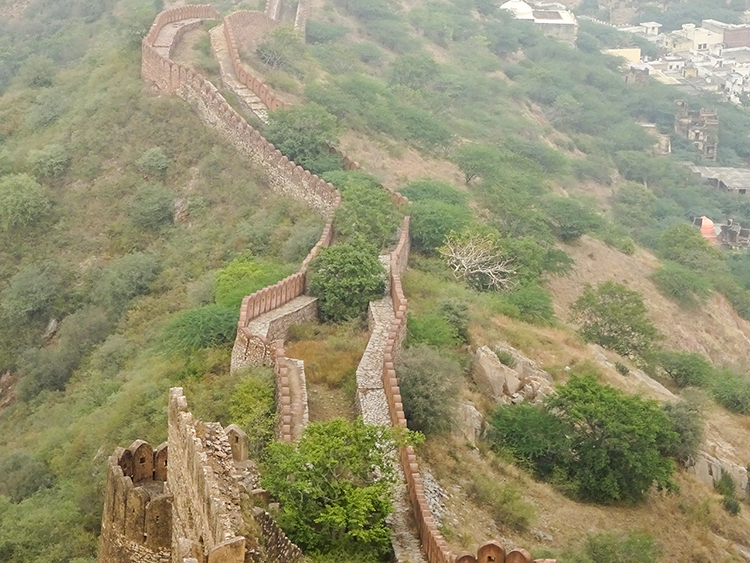
Great wall built around the city
On completing our 4 days tour of Jaipur, we moved on to Agra on the 5th day.





